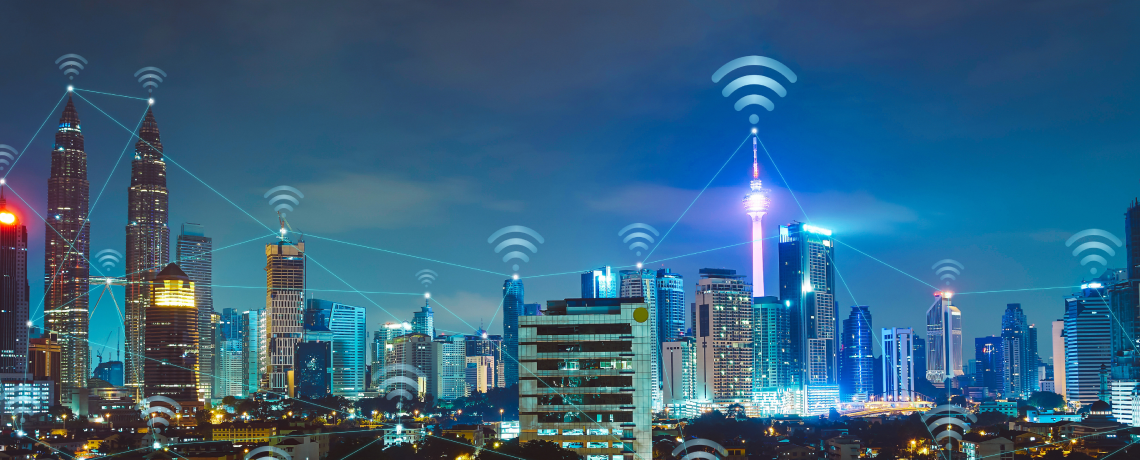Introduction
In today’s fast-paced world, technology has become integral to our lives, shaping how we work, live, and interact. Buildings, both commercial and residential, are no exception to this trend. As we progress towards a more connected and automated future, it is crucial for buildings to keep up with the times. This blog explores the concept of building automation and control and the numerous benefits it offers.
Understanding Building Automation and Control Systems
Building automation and control systems integrate different building equipment to streamline operations, enhance energy efficiency, improve occupant comfort and safety, and reduce costs. This involves utilizing advanced sensors, actuators, controllers, and user interfaces to automate and monitor functions like HVAC, lighting, security, and access control. By implementing a building automation and control system, buildings can optimize resource usage, create personalized environments, and ensure the well-being of occupants. These systems play a crucial role in modern buildings, enabling efficient management and operation of various functions to meet the evolving needs of occupants and maximize sustainability.
Benefits of a Building Automation and Control System
Building automation and control systems offer several significant advantages, including:
Increased Energy Efficiency: By optimizing energy usage and managing resources effectively, building automation systems can significantly reduce energy consumption, resulting in lower utility bills and a reduced environmental footprint.
Enhanced Comfort and Convenience: Automated control over lighting, temperature, and ventilation results in in increased comfort and productivity.
Improved Security and Safety: Integrated security systems, including access control and fire alarm systems, enhance the safety and security of occupants and assets within a building.
Streamlined Maintenance and Operations: Automation simplifies routine maintenance tasks and enables proactive monitoring and predictive maintenance, ensuring that equipment operates optimally and minimizing downtime.
Components of Building Automation Systems
Building automation systems consist of several key components, including:
Sensors and Actuators: These devices monitor and measure various environmental parameters such as temperature, humidity, occupancy, and light levels. Actuators respond to control signals by adjusting equipment operation accordingly.
Controllers and Network Infrastructure: Controllers receive data from sensors, process it, and issue commands to actuators. Network infrastructure facilitates communication between devices and enables centralized control and monitoring.
User Interfaces and Dashboards: User interfaces provide a way for building occupants and administrators to interact with the automation system. Dashboards display real-time data, analytics, and control options in a user-friendly manner.
Integration and Interoperability: Building automation systems integrate with existing equipment and subsystems to ensure compatibility and interoperability across different systems, such as HVAC, lighting, security, and fire safety.
Applications of Building Automation and Control
Building automation and control find applications in various types of buildings, including:
Commercial Buildings: Office complexes, shopping malls, hotels, and restaurants benefit from automation by providing personalized environments, optimizing energy consumption, and improving security.
Residential Buildings: Smart homes leverage automation to enhance comfort, convenience, and energy efficiency through features like automated lighting, thermostats, and integrated entertainment systems.
Industrial Facilities: Manufacturing plants and warehouses employ building automation systems to optimize processes, monitor equipment performance, and improve worker safety.
Healthcare Facilities: Hospitals and medical facilities benefit from automation by ensuring precise environmental conditions, monitoring critical equipment, and enhancing patient safety and comfort.
Educational Institutions: Schools and universities utilize automation for efficient energy management, security, and centralized control of various systems throughout the campus.
Implementing Building Automation and Control
To implement building automation and control effectively, the following steps are crucial:
Assessing Building Needs: Identify the specific requirements and goals of the building automation system, considering factors such as energy usage, occupancy patterns, and operational priorities.
Designing and Planning the System: Collaborate with experts to design a system that meets the identified needs, ensuring compatibility, scalability, and adherence to industry standards and regulations.
Installation and Commissioning: Engage qualified professionals to install the necessary equipment, configure the system, and perform comprehensive testing and commissioning to ensure proper functionality.
Training and Education: Educate building occupants and administrators about the features and operation of the automation system, empowering them to utilize its capabilities effectively.
Maintenance and Support: Establish a maintenance plan to regularly inspect and service the automation system, addressing any issues promptly, and providing ongoing support to ensure optimal performance.
Future Trends in Building Automation and Control
As technology continues to advance, several trends are shaping the future of building automation and control, including:
Internet of Things (IoT) Integration: The integration of IoT devices and sensors allows for more extensive data collection and analysis, enabling smarter decision-making and automation within buildings.
Artificial Intelligence (AI) and Machine Learning (ML): AI and ML algorithms can analyse vast amounts of data to identify patterns, optimize system performance, and provide predictive analytics for maintenance and energy management.
Predictive Analytics and Maintenance: Building automation systems can leverage data analytics to predict equipment failures, optimize maintenance schedules, and minimize downtime by proactively addressing issues before they occur.
Smart Grid Integration: Building automation systems can integrate with the smart grid to optimize energy usage based on real-time pricing and demand response programs, reducing energy costs and supporting grid stability.
Sustainability and Green Building Practices: Building automation plays a crucial role in achieving sustainable and energy-efficient buildings. Systems can optimize energy consumption, monitor renewable energy sources, and support green building certifications.














